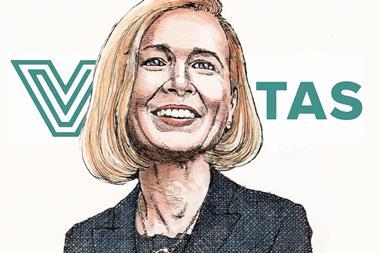GERMANY - The Nestlé Germany Pensionskasse has diversified into covered bonds and will stick with its 30% equity allocation, according to chairman Peter Hadasch.
The allocation is one of the highest in the country, where pension schemes generally devote less than 10% of their portfolios to the asset class.
Hadasch told IPE: "We have earned a lot during the upswing and built buffers, which has worked well, and we are currently around 101% funded."
However, to achieve the 3.5% interest on pension assets this year, the fund will have to use almost all of its buffers, he added.
For 2011, Hadasch expects a "balanced result", and he noted that the fund would keep its "traditionally high" equity exposure, which has currently fallen to 25% because of the recent market downturns.
Just over one-third of the equity holdings are hedged in a CPPI structure, with which the fund has had "relatively positive experiences" after some fine-tuning, Hadasch said.
He added that the hedging had worked in falling markets and cost the fund in upward phases, which means that, in general, the effect was neutral.
However, Hadasch said the structure prevented a high volatility in the portfolio, "which normally makes it necessary to inform the supervisory body Bafin" and means the company has to make additional payments almost immediately.
As for the bond portfolio, the Nestlé scheme has now gone into covered bonds to diversify its German bunds and corporate bond holdings.
"It is very difficult to keep the bond portfolio diversified, as a lot of options have fallen through," Hadasch said.
The Pensionskasse had reduced its positions in bonds from Southern European countries quite early on and is now almost solely holding Italian inflation-linkers from that region, he said.
He added that the fund was currently "not participating" in the "emerging market bond hype", as "many Nestlé employees from these regions say too much money is flowing in too easily".
Hadasch added: "With our equity exposure, which also includes private equity and a 5% hedge fund portfolio, we are already taking enough risk, which, in turn, offers enough return opportunities."
Further, the fund has invested 14% in real estate, which has proven to be "very stable" with the direct holdings being fully let.
The chairman said the scheme could increase its allocation to real estate to 17% and would have done earlier, but, "at the moment, there are no properties at good prices".
Hadasch is one of few in his industry who believes the supervisory regulations do not overly limit the investment approach for Pensionskassen, as long as the company and the fund agree on the approach.
Even in the Pensionsfonds for Nestlé Germany created in 2009, which is less strictly regulated than the Pensionskasse, a similar asset allocation can be found, as Nestlé does not want to use this second vehicle as a "speculative" one, Hadasch said.












No comments yet